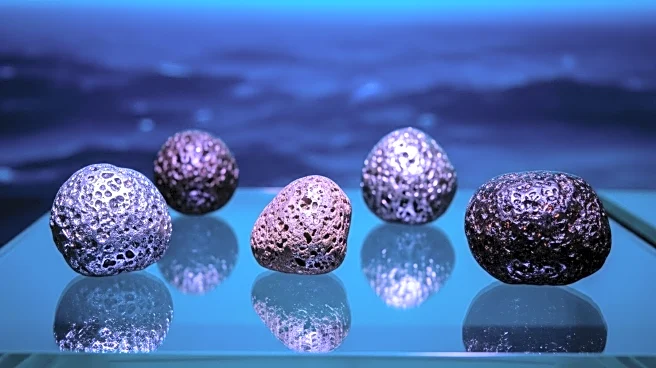What's Happening?
A team led by Avi Loeb from Harvard University conducted an expedition to the Pacific Ocean to retrieve remnants of the interstellar meteor IM1. The meteor, confirmed by the U.S. Space Command, resulted in the collection of approximately 850 spherules. These fragments were analyzed in a geochemistry laboratory, revealing a unique composition enriched with elements such as beryllium, lanthanum, and uranium, termed 'BeLaU' spherules. The findings indicate that these spherules differ significantly from known solar system materials, challenging initial speculations that they might be terrestrial in origin, such as coal ash or tektites.
Why It's Important?
The discovery of BeLaU spherules with a composition distinct from terrestrial materials suggests potential interstellar origins, offering insights into cosmic phenomena and the materials that exist beyond our solar system. This research could have implications for understanding the formation and composition of interstellar objects, potentially influencing future studies in astronomy and geochemistry. The findings also highlight the importance of rigorous scientific analysis in distinguishing between terrestrial and extraterrestrial materials, which could impact how scientists approach the study of cosmic debris.
What's Next?
The research team plans to continue analyzing the BeLaU spherules to further understand their origins and properties. The expedition and its findings will be featured in a Netflix documentary and a book set to be released in 2026, potentially increasing public interest and awareness in interstellar research. Further studies may explore the implications of these findings for the broader field of astrophysics and the search for extraterrestrial materials.
Beyond the Headlines
The identification of BeLaU spherules challenges existing assumptions about the composition of interstellar materials and raises questions about the processes that lead to their formation. This discovery could prompt a reevaluation of how scientists classify and study cosmic debris, potentially leading to new methodologies in the field. The research underscores the importance of interdisciplinary collaboration in advancing scientific knowledge and understanding complex phenomena.













